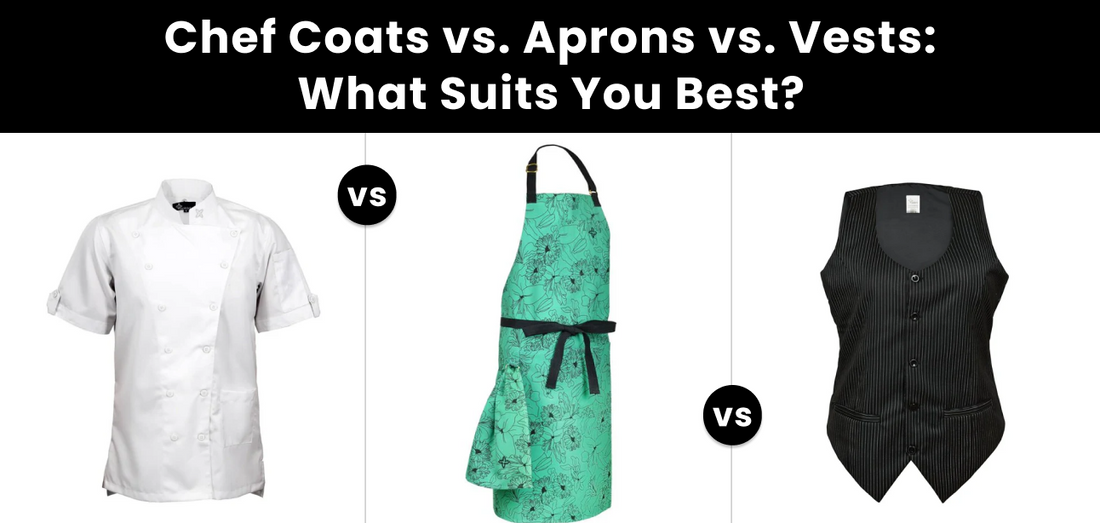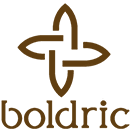
Chef Coats, Aprons, or Vest? Which One is Best for Your Workstyle?
Share
In the demanding and fast-paced setting of the professional kitchen, the chef's clothing is not only a uniform, but it is also an important consideration for performance, safety, and professional identity. For clothes, hats, chef coat, apron, shoes, etc., each one plays a part in kitchen performance, but none gets more attention as to how the chef thinks when working every day than the chef coat, apron, and probably the chef vest. Selecting the chef coat, apron, and chef vest combination is not just about selection based on choice and taste. It is about choosing comfort, cleanability, safety, and efficiency according to how the chef works and where they work. As new styles and textiles get designed and manufactured, it is important for chefs to know and understand the functional aspects of everything they wear.
The Battle of Chef Coats vs Aprons
The argument as to which is better for chefs: apron or coat? has been an ongoing issue, usually depending on specific kitchen positions, climate, and personal ideas. There are different styles of coats and aprons that have their own purpose, benefits, and disadvantages. This includes the ongoing discussion of chef coats vs aprons.
Chef Coats:
- Historically, the chef coat has been the card-carrying representative of culinary professionalism.
- Chef coats, which are typically double-breasted and long-sleeved, have a few main functions.
- The double-breasted style means the chef can simply switch to a clean section of the coat. This is important because they have long shifts for the day, which could include a range of work values, and also keep up a fresh appearance if needed.
- The sleeves are long to help protect arms from heat and cuts, whereas long sleeves with fabric made for breathability (some coats have mesh venting for added airflow) can help to dissipate heat.
- Chefs who work in high-volume kitchens, with a variety of products being issued, quantity output, and heat production, for the most part, will wear their protective gear.
- But, there are times when doing food with a lot of allergens would also involve a basic style of apron used for entry-level prep cooks engaging in food being made quickly in a high-heat department, or when chefs choose differing fabrics that were much lighter, advanced features than their heavy traditional coats!
Aprons:
- Unlike a coat, which protects a chef from head to foot, an apron is mainly a front protective shield for what you're wearing.
- Aprons come in many types of material, including lightweight cotton, heavyweight denim or leather, and everything in between! Aprons are extremely useful for protecting your clothing from spills, stains, and, to some extent, small splashes throughout the cooking process.
- Aprons have the advantage of being easy to put on and take off. This is particularly helpful when you want to get dressed quickly or when you move to different cooking tasks in the kitchen.
- There are two main types of aprons: bib aprons, which offer chest and knee coverage, and waist aprons, which offer protection for the lower part of the body.
- For types of chefs who work in environments where there is little to no direct heat and have more time in front of guests, an apron is a useful (stylish yet functional kitchen workwear) option.
Finding the Most Comfortable Chef Uniform for Long Shifts
Selecting chef workwear is not merely a matter of choosing between a coat and an apron; it is the assembling of a combination that works for your specific work style, comfort during the long work hours, and safety in a difficult environment.
-
For chefs working in extreme heat, the best workwear for chefs in hot kitchens is made with fabric technology and smart design.
-
The range of kitchen uniform comparison suggests there is no single "best" option for all chefs.
- At the end of the day, the final parts of your chef's uniform will be based on personal comfort, and establish what is the baseline for the industry. This is part of perfecting the most comfortable chef uniform for long shifts. At the very least, it will combine units that will add flair to your professional chef attire.
Conclusion
In the professional kitchen, the chef's workwear selection is critical to their success. It is more than just style; the type of protection directly affects safety, hygiene, comfort, and efficacy through long, demanding shifts. Chef coats provide a great degree of protection and a conventional representation of the profession. Aprons provide dynamic protection front-facing, and today's materials are evolving to combat ultra-hot kitchens. In the end, the choice between chef coats vs aprons or vests is balanced by knowing your role, environment, and personal comfort needs.
Discover a range of comfortable and functional workwear on the Our website. Happy cooking!
